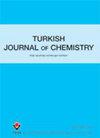三聚氰胺修饰金纳米颗粒测定氯胺酮
IF 1.3
4区 化学
Q3 CHEMISTRY, MULTIDISCIPLINARY
引用次数: 0
摘要
氯胺酮被用于医学,因为它在低剂量下具有麻醉和抗抑郁作用。不幸的是,由于它在高剂量使用时具有麻醉作用,年轻人滥用它的情况正在增加。它也是强奸中最常用的药物之一。因此,需要能够在现场执行的快速且廉价的测试。随着纳米技术的进步,基于纳米粒子的方法已经在许多领域的选择性分析中找到了自己的位置。首先用三聚氰胺修饰金纳米粒子(AuNPs@Mel)。在优化条件下,氯胺酮与AuNPs@Mel之间形成的氢键使AuNPs@Mel的红色变为蓝紫色(即聚集诱导的表面等离子体吸收位移)。氯胺酮浓度在4.76 ~ 47.6 mg L-1范围内,吸光度与浓度之间的线性相关系数为0.9981。该方法的检出限为1.5 mg L-1,浓度的RSD(相对标准偏差)值变化范围为5.2% ~ 8.2%。采用该方法测定的内、间变异系数(cv)分别为5.7%和8.5%。采用扫描透射电子显微镜(STEM)、紫外-可见分光光度法和红外光谱法对合成和修饰的AuNPs进行了表征。此外,该程序成功地进行了一些干扰材料和胎牛血清的真实样本。最后,使用学生t检验和F检验,将建议的技术与先前发表的LC-MS/ MS程序进行比较并确认本文章由计算机程序翻译,如有差异,请以英文原文为准。
Determination of ketamine using melamine-modified gold nanoparticles
Ketamine is used in medicine because of its anaesthetic and antidepressant effects at low doses. Unfortunately, due to its narcotic effect when used at high doses, its abuse among young people is increasing. It is also one of the most common drugs used in rape. Therefore, there is a need for fast and inexpensive tests that can be performed on-site. With the advancement of nanotechnology, nanoparticle-based approaches have found their place in selective analyses as in many fields. In the developed method, firstly gold nanoparticles were modified with melamine (AuNPs@Mel). Under optimized conditions, hydrogen bonds formed between ketamine and AuNPs@Mel cause the red colour of AuNPs@Mel to shift to blue-purple (i.e. aggregation-induced surface plasmon absorption shift). The association between absorbance and concentration produced a calibration line (curve) having a linearity correlation coefficient of 0.9981 for ketamine concentrations ranging from 4.76 to 47.6 mg L-1. The detection limit of the proposed method was 1.5 mg L-1 and the RSD (relative standard deviation) values of concentrations were changed ranging from 5.2% to 8.2%. The intra-assay and inter-assay measurements using the suggested method resulted in coefficients of variation (CVs) of 5.7% and 8.5%, respectively. Scan transmission electron microscopy (STEM), UV-vis spectrophotometry and FTIR spectroscopy were used to characterize the synthesized and modified AuNPs. Additionally, the procedure was successfully carried out with some interference materials and a real sample of fetal bovine serum. Lastly, using the Student t-test and F tests, the suggested technique was compared to and confirmed against an LC-MS/ MS procedure previously published
求助全文
通过发布文献求助,成功后即可免费获取论文全文。
去求助
来源期刊

Turkish Journal of Chemistry
化学-工程:化工
CiteScore
2.40
自引率
7.10%
发文量
87
审稿时长
3 months
期刊介绍:
The Turkish Journal of Chemistry is a bimonthly multidisciplinary journal published by the Scientific and Technological Research Council of Turkey (TÜBİTAK).
The journal is dedicated to dissemination of knowledge in all disciplines of chemistry (organic, inorganic, physical, polymeric, technical, theoretical and analytical chemistry) as well as research at the interface with other sciences especially in chemical engineering where molecular aspects are key to the findings.
The journal accepts English-language original manuscripts and contribution is open to researchers of all nationalities.
The journal publishes refereed original papers, reviews, letters to editor and issues devoted to special fields.
All manuscripts are peer-reviewed and electronic processing ensures accurate reproduction of text and data, plus publication times as short as possible.
 求助内容:
求助内容: 应助结果提醒方式:
应助结果提醒方式:


